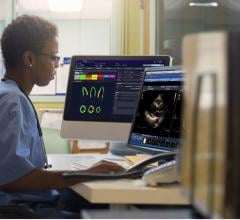
ACC-NCDR data collection is now part of the routine documentation process at St. Joseph Medical Center, ensuring data only needs to be entered once.
When the time nears for quarterly submissions to the American College of Cardiology (ACC)-National Cardiovascular Data Registry (NCDR), most hospital cardiology departments around the country are scrambling. Numerous staff must work feverishly to manually collect the necessary information from different patient charts and then validate the accuracy of that data. It’s tedious, expensive and – thanks to information technology – unnecessary.
In 2006, our center (St. Joseph Medical Center in Reading, Pa.) implemented McKesson’s Horizon Cardiology cardiovascular information system (CVIS) and moved from a paper process to a workflow with everything available at the click of a button. The initial CVIS implementation included the hemodynamic monitoring system as well as workstations strategically placed for physicians to review and interpret studies and finalize reporting. As an extension of this implementation, we are awaiting the installation of additional workstations in our control rooms that will allow the physicians to do their report immediately after the procedure. With the CVIS, we not only improved the overall workflow in the cardiology department, but also the data entered for procedure charting is the same data needed for registry submission.
Standalone Systems are a Thing of the Past
After 125 years, St. Joseph Medical Center was in the unique position of moving its entire campus from a 12-acre, landlocked site in the city of Reading to a 40-acre site four miles away and less than a mile outside the city. The new location provided better highway access, which was important since the hospital’s patient base extended – and was rapidly growing – beyond city limits. We have always been the small hospital in town and, like any underdog, we’re always fighting to establish our clinical credentials since smaller hospitals often are not perceived as being as innovative as we are.
With room to grow and a new, state-of-the-art platform, we were able to re-envision how we wanted to deliver healthcare and this new start put us in a great competitive position. Our work environment was all new: it made us more accessible, gave us room for future growth and, with everything being new from top to bottom, it made perfect sense to update our information technology.
While we had another vendor’s hemodynamic system in place, it wasn’t integrated into our workflow. The dictation report lived separately from the images. Cardiac ultrasound, meanwhile, was still on tapes, and cardiologists were still drawing coronary anatomy on pieces of paper. If we had wanted to submit to the ACC-NCDR, we would have had to pull data from multiple systems and paper. No matter what technology we chose, it was vital to come out early with training for physicians to ensure that they were satisfied with any new information technology implemented.
We knew that standalone systems were becoming a thing of the past and that we needed our cardiovascular system to talk to our electronic medical record (EMR). In our new facility we have four labs, including one dedicated electrophysiology (EP) lab, one interventional radiology (IR) lab and two cath labs that can be used for both coronary and peripheral cases. With approximately 400 cases a quarter to submit to ACC-NCDR, we needed new technology to automate our workflow, improve our accuracy and save time.
Shared Desktop for Pre-, Intra- and Post-Procedure
I was part of the committee that evaluated vendors. We looked at several and then narrowed the list to three vendors. After a six-month evaluation process, complete with site visits to other hospitals with CVIS implementations, we chose McKesson’s Horizon Cardiology system. The CVIS is a great system that practically runs itself and integrates with the Horizon Medical Imaging picture archiving and communications system (PACS) for radiology (from McKesson).
Our evaluation team consisted of personnel from various hospitals within the Catholic Health Initiatives organization. As a group, we felt that McKesson would best serve our needs globally. It has been quite a journey, but we have grown quite a bit and are happy with our decision. McKesson R&D has worked with us to develop improvements in the existing system, including the interventional peripheral reporting.
With Horizon Cardiology, the system has the ability to have a shared desktop for pre-, intra- and post-procedure, which is phenomenal to our workflow. In the holding area, nurses do admission and assessment charting on Horizon Cardiology. Data is automatically available in the cath lab and updated during the procedure, allowing the physicians to come out of the cath lab, go to the workstation and pull up everything they need to complete and sign the report immediately after the procedure.
All of the data collected in this shared desktop is the same data needed for registry submission. Once the physician signs the report, the ACC-NCDR data is transferred to Cedaron, McKesson’s ACC-NCDR solution, where our staff simply documents the additional discharge information and the case is ready for submission to the ACC registry.
As a small hospital, we could not afford the additional staff to manually collect the NCDR data from the various paper charts that previously made up our cardiovascular patient records. Implementing a CVIS that has a single database containing the nurse charting, procedure charting and the physician’s report, we are able to painlessly and electronically submit on a quarterly basis to the registry.
For more information: www.allaboutCVIS.com



 May 15, 2024
May 15, 2024 








